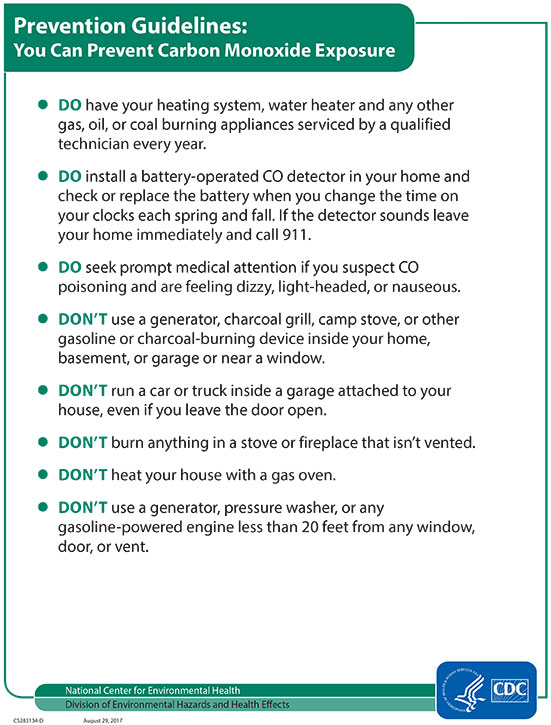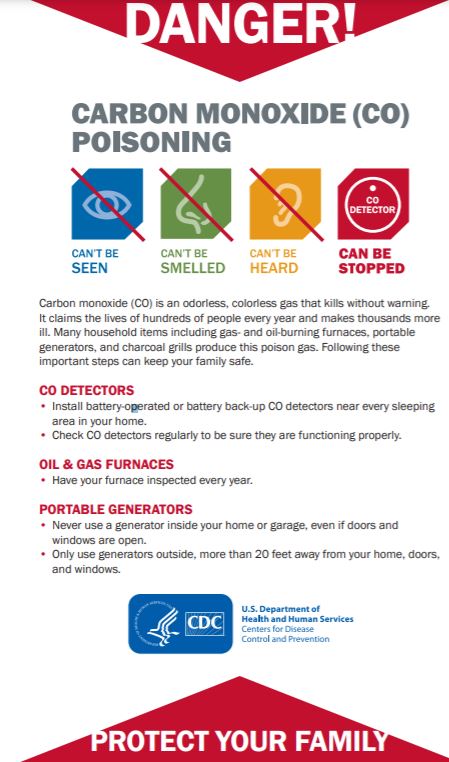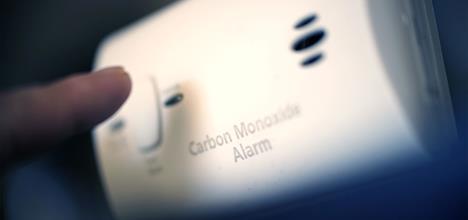Carbon monoxide (CO) is an odorless, colorless gas that is poisonous to breathe. Mild signs and symptoms of CO poisoning can include headache, dizziness, weakness, nausea, vomiting, chest pain, and altered mental status.
CO poisoning can occur at any time. CO emissions are a biproduct of combustion, which can be caused by a running car engine, running generators in a closed space, malfunctioning heaters and even fireplaces can cause a buildup of carbon monoxide (CO) in your home.
A person can be poisoned by a small amount of CO over a longer period, or by a large amount of CO over a shorter amount of time.
Symptoms of severe CO poisoning include shortness of breath, headache, nausea, chest pain, irritability, altered mental status, loss of consciousness, coma, and death. If you think you or someone you’re with is suffering from CO poisoning, move to a fresh air environment and call 9-1-1. EMS personnel will be able to make an assessment and administer high concentrations of oxygen to treat CO poisoning. In severe cases, the patient may need to be transported to a hospital that has hyperbaric treatment available.
To stay safe from CO poisoning:
- Consider installing a CO detector in your home.
- Have fuel-burning heating equipment and chimneys inspected by a professional every year before cold weather sets in.
- When using a fireplace, open the flue for adequate ventilation. Never use your oven to heat your home.
- Operate all gasoline-powered devices, such as gas-powered heaters outdoors and never bring them indoors.
- Be careful when using other alternate heating sources such as stoves or grills.








